Debunking Linfield Myths: a series
Jordan Jacobo
Review staff writer
For generations of Linfield students, football has been an essential component of the college experience. Saturday afternoons are spent in sun, rain, hail or fog. Musty, tattered couches are dragged out to the student section in the south end zone. Fans, young and old, await the opening kickoff with racing excitement, dressed in traditional Wildcat colors.
Nothing more needs to be said about the streak of 52 consecutive winning seasons; winning is both an expectation and a tradition.
But the myth remains: Was Linfield ever without a football program? Was it banned for being too violent for the Baptist college during its early history?
“At that point, football was a very different sport,” Dean of Students Dave Hansen said. “It was very rough and tumble, and they didn’t have the same level of protective gear. I think even President Theodore Roosevelt had some misgivings about whether it should be a proper sport.”
Little information seems to be circulated about the topic, but archives of the old school yearbooks are able to rehash the truth from decades ago.
According to the 1922 edition of the Oak Leaves, “After 16 years, football will again be played at Linfield. Sixteen years ago, the roughness of the game and the death of one student here coming as a direct result of football, caused the administration to put a ban on the game until such time as the rules had changed sufficiently to warrant the reinstatement of the sport.”
That year, the board of trustees and McMinnville College President Leonard Riley decided to approve two intercollegiate football games to be played in the fall of 1922.
There is no other mention of the death that had brought the college’s football program to a halt.
“It would be hard to envision Linfield without football today,” Athletic Director Scott Carnahan said. “When you put an athletic team on display, it represents the institution; it’s a valuable part of our recruiting process.”
“In Bricks Without Straw,” an early history of the college written in 1938 by former professor Jonas A. Jonasson, he said football was “the most popular of all college sports.”
Jonasson describes how football was banned at Linfield: “The president of the college did not share this enthusiasm. On the contrary, he felt that the game as played in America tended to develop rowdyism and brutality, besides exposing players to the danger of permanent physical injury.”
On March 27, 1906, the board agreed to prohibit football indefinitely.
For the next 16 years, students frequently pleaded for the reversal of the decision; however, in 1915 Riley went as far as recommending to the Association of Independent Colleges of Oregon that all intercollegiate football programs be abolished.
In the spring of 1921, a group of athletic directors and student representatives petitioned the McMinnville College Board of Trustees for a reversal of the ban, according to Jonasson, asking for a broader athletic program.
In “Linfield’s Hundred Years,” written by former history professor Kenneth L. Holmes, the student activism is shown to have paid off.
Riley announced a special afternoon chapel on Jan. 10, 1922.
“(The students) felt sure what the surprise was going to be,” Holmes wrote. “They were right; football was again to be a college sport.”
But Riley’s second announcement eclipsed the enthusiasm of the 16-year football ban reversal. He told the students of Frances Ross Linfield’s decision to leave the college her properties in Spokane, Wash., estimated to be worth $250,000.
Riley said in honor of her gift, McMinnville College was to be renamed Linfield College.
Thus, Linfield and its football program were born together, re-created on the same afternoon.
The 1923 Oak Leaves reflects on the first season of football after its reinstatement: “The turn-out was large but most of the men had very little experience. But what was lacking in experience was made up with fighting grit, stick-to-it-iveness and the indomitable Linfield spirit.”
Led by team captain and quarterback “Ed” Kratt, Linfield split two games in the fall of 1922, beating Pacific College, 20-0, while losing to Willamette University, 36-0.
They were humble beginnings for a program destined to become one of the most dominant in the nation.
So, let the record stand: Football at Linfield was banned from 1906 to 1921, a gap in gridiron greatness, a Linfield myth proved fact by the annals of time.

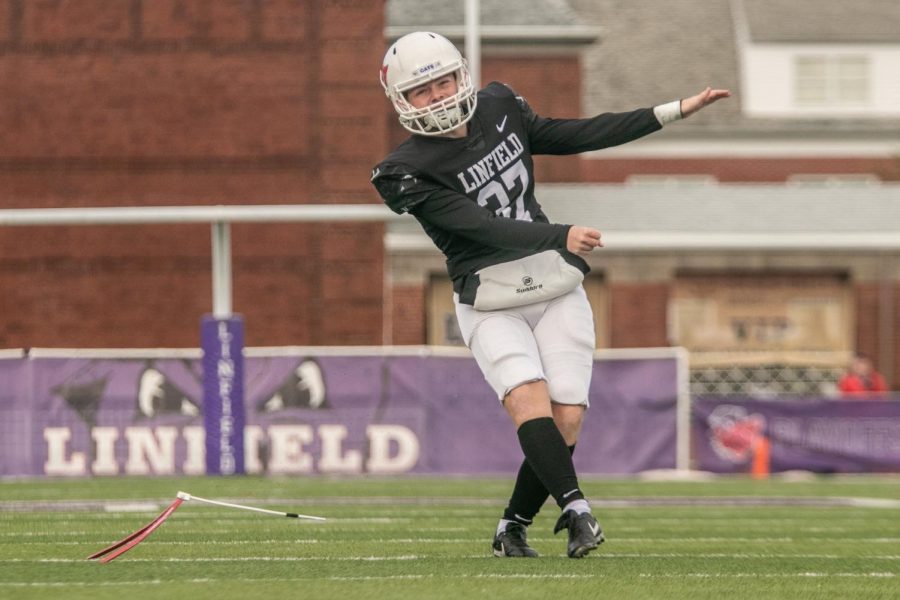
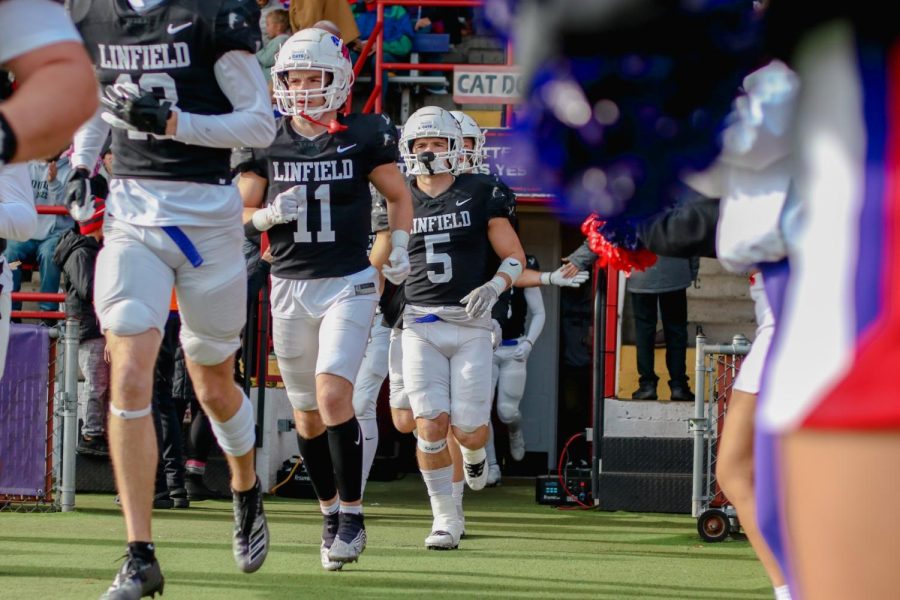
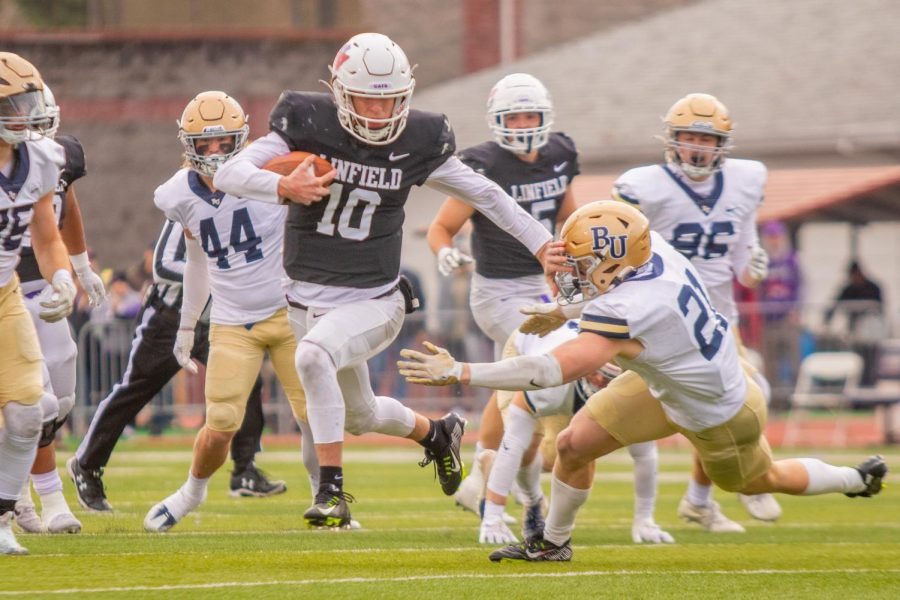

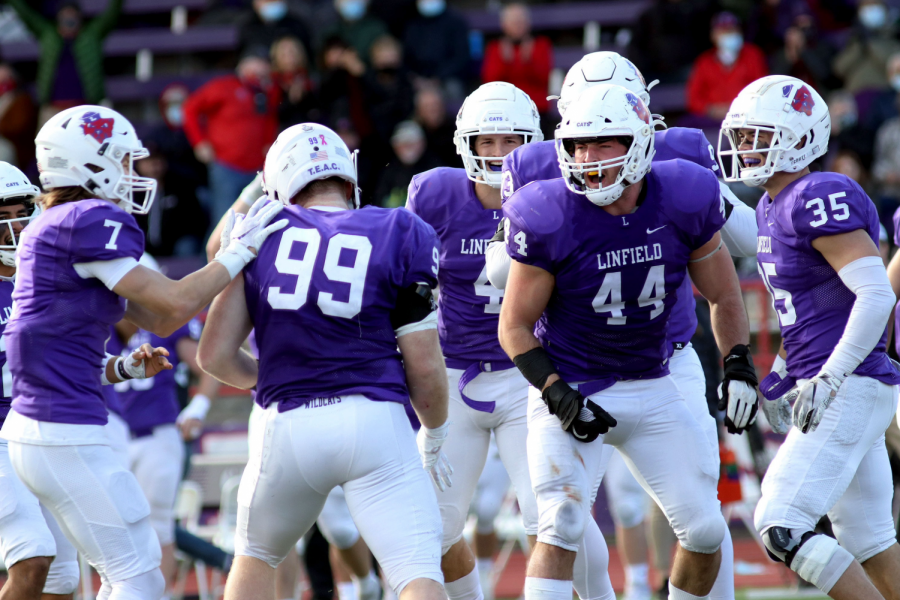
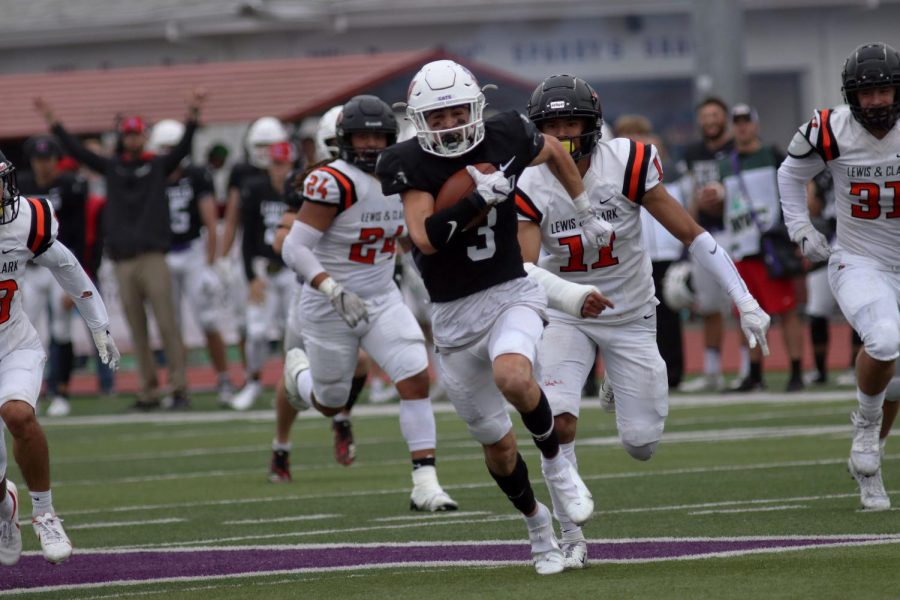

Dennis Anderson '58 • Sep 19, 2011 at 9:50 pm
In fourth paragraph, Dean of Students’ first name is Dave Hansen, not Dean. Otherwise, an informative story.
jaffy0125 • Sep 20, 2011 at 6:41 pm
Thanks!
LSU Football • Aug 31, 2009 at 8:52 am
Football and college go together. Great read.